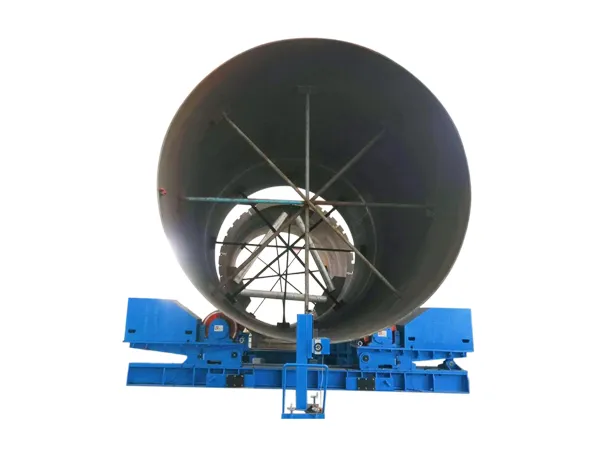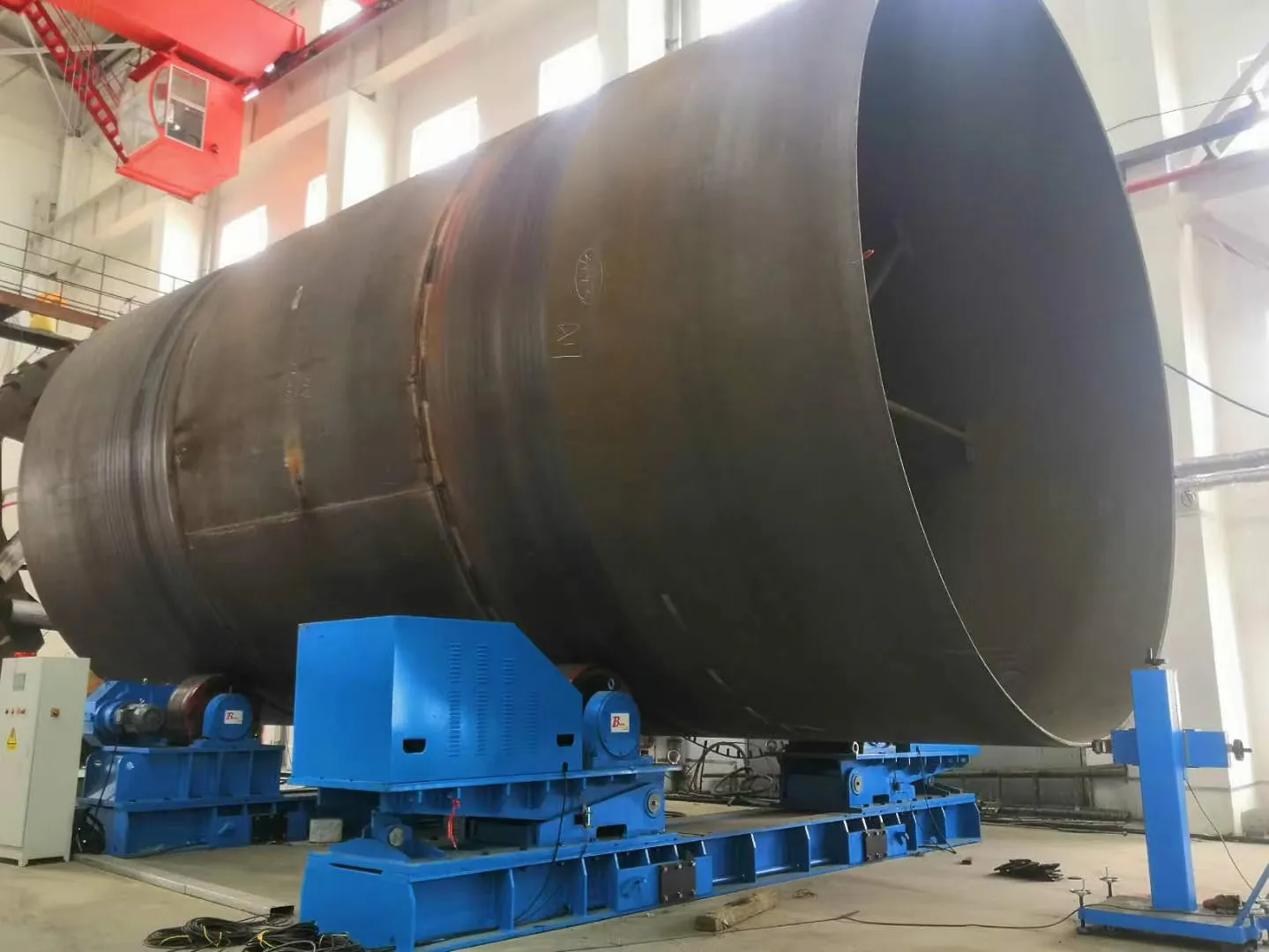Pipe welding rotators are specialized equipment used in the welding industry to assist in the fabrication and welding of pipes, vessels, and other cylindrical workpieces. These rotators are designed to rotate the workpiece at a controlled speed during the welding process, allowing for precise and efficient welding.
Pipe welding using a welding rotator typically involves several steps to ensure proper alignment, welding, and quality control. Here's a general outline of the welding steps involved:
Preparation:
Clean the pipe surfaces to be welded thoroughly to remove any dirt, rust, or contaminants that could affect the weld quality.
Ensure proper fit-up of the pipes to be welded, aligning them accurately to minimize gaps and ensure even welding.
Set-Up:
Position the pipes on the welding rotator, ensuring that they are securely held and balanced to prevent movement during welding.
Adjust the welding rotator speed and angle to suit the welding process and the specific requirements of the job.

Tack Welding:
Use tack welds to temporarily hold the pipes in place while welding. Tack welds help maintain alignment and prevent distortion during the welding process.
Tack welds should be placed strategically along the length of the joint, typically at regular intervals.
Root Pass Welding:
Begin the welding process by laying down the root pass. This is the first weld bead deposited in the joint.
Depending on the welding procedure and requirements, the root pass may be deposited using techniques such as TIG (Tungsten Inert Gas), MIG (Metal Inert Gas), or SMAW (Shielded Metal Arc Welding).
Filler Passes:
After the root pass is complete, additional filler passes are deposited to fill the joint and build up the weld.
The number of filler passes required depends on factors such as the thickness of the pipe and welding specifications.
Cover Pass:
Once the joint is adequately filled, a cover pass is applied to the weld to ensure complete penetration and to provide a smooth, even surface finish.
The cover pass helps improve the appearance and integrity of the weld.

Quality Control:
Throughout the welding process, quality control measures should be implemented to ensure that welding parameters are maintained, and the welds meet required standards.
Non-destructive testing (NDT) methods such as visual inspection, ultrasonic testing, or radiographic testing may be used to check the integrity of the welds.
Post-Welding:
After welding is complete, remove any excess weld material and clean the weld area to remove slag and spatter.
Inspect the completed weld for defects and ensure that it meets all applicable quality standards.
By following these steps carefully, pipe welding using a welding rotator can result in strong, durable welds suitable for a variety of applications.
No. 1 Intersection of Chuangye Avenue and Weilai Avenue,
Yiyang County,Luoyang City, Henan Province, China
+86 400-0379-069
Copyright © 2023 An Automated Welding and Cutting Equipment Manufacturer Focusing on Welding Column Boom and Welding Rotator | All Rights Reserved Technical support: ShangXian